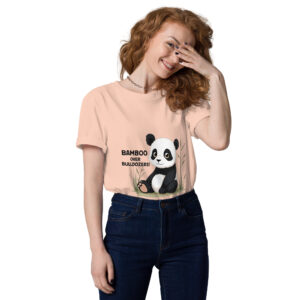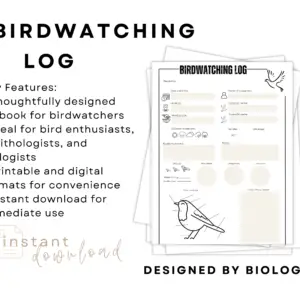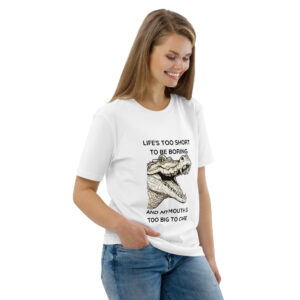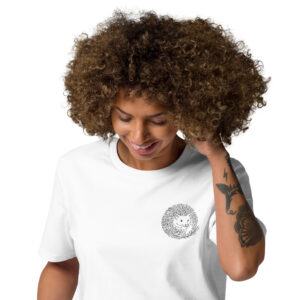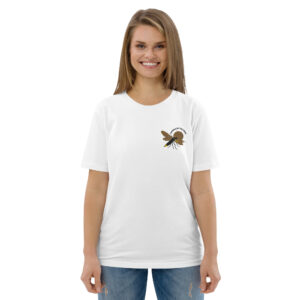Have you ever wondered what a bobcat looks like up close? Well, you’re in luck! In this article, we’ll delve into the fascinating anatomy of bobcats and explore their unique physical features.
From their medium-sized stature to their complex spotted pattern, bobcats possess a striking appearance that sets them apart from other wild cat species.
We’ll also compare them to similar animals like lynx, coyotes, and cougars, highlighting their differences and similarities.
Get ready to discover the captivating world of bobcats and gain a deeper understanding of their remarkable anatomy.
Key Takeaways
- Bobcats have a medium-sized body with a complex spotted pattern, ruff of fur around the face, and broad paws with retractable claws.
- Their coat color varies from reddish brown to yellowish brown, with light gray patterns and a white underbelly.
- Bobcat kittens have dark spots and black stripes, and their eyes are initially light-colored or blue, turning yellowish with black pupils.
- Bobcats can be distinguished from other animals with similar appearances, such as lynx, coyotes, and cougars, based on their unique features like tuft ears and black-tipped tails.
General Appearance and Identification
When identifying bobcats, look for their distinctive coat color and complex spotted pattern on their body. The significance of the spotted pattern can’t be overstated, as it serves as a crucial cue for their identification.
The coat color of bobcats is a mixture of reddish brown, yellowish brown, buff-brown, and light gray. These colors blend together to create a beautifully intricate spotted pattern, which helps them blend into their natural surroundings. This adaptive camouflage allows bobcats to remain hidden from predators and successfully hunt their prey.
In addition to their coat color, there are also behavioral cues that can aid in their identification. Bobcats are known for their secretive nature and are mostly active during dawn and dusk, making it more challenging to spot them. However, their distinctive ruff of fur around the side face and their broad and large paws with retractable claws can be additional characteristics to look out for.
Ruff of Fur and Paws
Take a closer look at the ruff of fur and paws of a bobcat.
The ruff of fur serves as a distinctive feature around the side face, providing protection and insulation.
Bobcats have broad and large paws with retractable claws, allowing them to efficiently navigate their environment and capture prey.
Ruff Function and Purpose
During the mating season, bobcats rely on their ruff of fur and broad paws for various functions and purposes. The ruff adaptation, a thick and elongated fur around their face, serves as a sensory tool and a form of communication. It helps in detecting scents in the environment and expressing their emotions through facial expressions.
Additionally, the ruff serves as a protective layer against potential injuries during territorial disputes or aggressive encounters with other bobcats. Their broad paws, equipped with retractable claws, aid in hunting and capturing prey with precision and agility. These paws provide stability and balance while navigating diverse terrains and enable them to silently approach their prey. The following table illustrates the functions and purposes of the ruff of fur and broad paws in bobcats during the mating season:
| Ruff of Fur | Broad Paws |
|---|---|
| Sensory tool | Aid in hunting |
| Communication | Stability and balance |
| Protection | Precise capturing |
| Express emotions | Silent movement |
| Navigating terrains |
Understanding the functions and purposes of the ruff of fur and broad paws during the mating season helps to shed light on the adaptive traits and behavior of bobcats in their natural habitat.
Adaptations of Bobcat Paws
When it comes to understanding the anatomy of bobcats, one important aspect to explore is the adaptations of their paws, specifically the ruff of fur and broad paws. The adaptations of bobcat paws serve various functions that enable these wild cats to survive and thrive in their natural habitats.
Here are five key adaptations of bobcat paws:
- Ruff of fur: The ruff of fur around the bobcat’s face acts as a form of camouflage, helping to break up the outline of the head and making it less noticeable to potential prey or predators.
- Broad paws: Bobcats have broad and large paws that distribute their weight more evenly, allowing them to move stealthily and quietly through various terrains.
- Retractable claws: Bobcats possess retractable claws, which they can extend or retract as needed. This adaptation helps them maintain sharp claws for hunting and climbing, while also protecting them from wear and tear when not in use.
- Sensitive pads: The pads on the bobcat’s paws are highly sensitive, allowing them to detect vibrations and changes in the terrain. This helps them navigate their surroundings and locate prey.
- Grip and traction: Bobcats have specialized pads on their paws that provide them with excellent grip and traction. This enables them to climb trees, scale rocky surfaces, and maneuver through challenging environments with ease.
Understanding these adaptations of bobcat paws gives us insight into the remarkable capabilities of these elusive and agile predators.
Track Identification
To identify bobcat tracks, you can look for distinctive features such as the shape of the paw print and the presence of retractable claws. Bobcat tracks can be analyzed by comparing them to tracks of other animals. Here is a table that highlights the differences between bobcat tracks and tracks of similar animals:
| Features | Bobcat Tracks | Coyote Tracks | House Cat Tracks | Lynx Tracks | Cougar Tracks |
|---|---|---|---|---|---|
| Paw Print Shape | Round | Oval | Round | Round | Oval |
| Claws | Retractable | Non-retractable | Retractable | Retractable | Non-retractable |
| Size | Medium | Large | Small | Large | Large |
| Number of Toes | 4 | 4 | 4 | 4 | 4 |
| Presence of Tail | Yes | Yes | Yes | Yes | Yes |
Signs for Identification
To correctly identify a bobcat, there are several signs you can look for.
First, pay attention to their physical characteristics, such as their coat color, spotted pattern, and the ruff of fur around their face.
Secondly, observe their behavioral cues, such as their secretive nature and activity patterns during dawn and dusk.
Lastly, it’s important to differentiate bobcats from similar species, like lynx, coyotes, and cougars, by examining their ears, hair, and size.
Physical Characteristics for Identification
If you frequently encounter bobcats in your area, it’s important to be able to identify them based on their physical characteristics. Here are some key features to look for:
- Ruff of fur around the side face: The ruff, also known as the cheek ruff, is a patch of fur that extends from the sides of the bobcat’s face. It serves no specific function but is thought to enhance their appearance and possibly play a role in communication.
- Tail: The bobcat’s tail is relatively short, measuring about 4 to 7 inches in length. It’s used for balance and communication, with various tail positions conveying different messages to other bobcats.
- Coat color and pattern: Bobcats have a mixture of reddish brown, yellowish brown, buff-brown, and light gray fur. Their coat is adorned with a complex pattern of spots that helps them blend into their surroundings.
- Broad and large paws with retractable claws: Bobcats have powerful paws with retractable claws, which they use for hunting and climbing. The size and shape of their paws distinguish them from other animals.
- Facial features: Bobcats have distinctive facial features, including tufted ears with a black tip and keen eyesight. These features contribute to their overall appearance and help with their hunting abilities.
Baby Bobcats and Distinguishing Features
When observing baby bobcats, you’ll notice distinctive features that set them apart from other kittens. These features include:
- Dark spots and black stripes: Baby bobcats have a unique pattern of dark spots and black stripes on their reddish or dark brown fur. This pattern helps them blend in with their surroundings and provides camouflage.
- Named kittens: Baby bobcats are often referred to as kittens, just like the young of domestic cats. However, they’ve different physical characteristics and behaviors than regular kittens.
- Average litter size of 4: Female bobcats typically give birth to an average litter size of four kittens. However, this number can increase to six in some cases.
- Light-colored or blue-colored eyes: Baby bobcats are born with light-colored or blue-colored eyes, which later turn yellowish with black pupils as they grow older.
- Size comparable to house cat kittens: Baby bobcats are similar in size to kittens of normal house cats, but they’ve distinguishing features that differentiate them from domestic kittens.
Understanding these distinguishing features of baby bobcats is important for accurately identifying them and differentiating them from other kittens. These features also provide insights into the reproductive behavior and development of bobcats.
Naming and Litter Size
You can identify the litter size of baby bobcats by observing that female bobcats typically give birth to an average of four kittens, but this number can increase to six in some cases. The naming traditions of bobcats vary, but they are often referred to as kittens. The litter size of bobcats can be influenced by various factors. One important factor is the availability of food resources. A female bobcat needs a sufficient amount of food during pregnancy and lactation to support the growth and development of her kittens.
Another factor is the age and health of the female bobcat. Older and healthier females tend to have larger litters compared to younger or less healthy females. Additionally, environmental conditions such as climate and habitat quality can also play a role in determining litter size. Bobcats living in areas with abundant resources and suitable habitats may have larger litters compared to those living in areas with limited resources.
| Factors Affecting Litter Size | |
|---|---|
| Food Resources | Availability of sufficient food during pregnancy and lactation |
| Female Age and Health | Older and healthier females tend to have larger litters |
| Environmental Conditions | Climate and habitat quality can influence litter size |
Eye Color and Development
Now let’s delve into the eye color and development of bobcats, continuing our exploration of their anatomy.
The eye color of bobcats undergoes a fascinating developmental process. Here are some important points to consider:
- Eye Color Development: Bobcats are born with light-colored or blue-colored eyes, which gradually transition to a yellowish hue with black pupils as they grow older. This transformation occurs over a period of several weeks.
- Role of Eye Color in Camouflage: The eye color of bobcats plays a crucial role in their ability to blend into their surroundings and remain hidden from potential threats or prey. The yellowish color of their eyes helps them camouflage with their reddish or dark brown fur, enabling them to effectively stalk and ambush their prey.
- Adaptation for Nocturnal Lifestyle: The development of yellowish eyes in bobcats is an adaptation to their primarily nocturnal lifestyle. The color helps to enhance their night vision, allowing them to navigate and hunt in low light conditions.
- Efficient Hunting Technique: Bobcats rely on their excellent vision to accurately assess distances and track their prey. The development of yellowish eyes enables them to effectively spot and target their prey even in dimly lit environments.
- Genetic Factors: The development of eye color in bobcats is influenced by genetic factors. The specific genes responsible for the transition from light-colored or blue-colored eyes to yellowish eyes are still being studied and researched.
Understanding the eye color development in bobcats provides valuable insights into their camouflage abilities and hunting techniques. By blending seamlessly into their surroundings, these magnificent creatures are able to thrive in their natural habitat.
Bobcats Vs Similar Animals
To differentiate bobcats from animals with similar appearances, consider their size, behavior, and unique features. When comparing bobcats to lynx species, it’s important to note that both have similar coat patterns and tufted ears. However, bobcats are generally smaller in size, weighing around 15 to 30 pounds, while lynx can weigh up to 40 pounds. Bobcats also have a broader range and can be found throughout North America, whereas lynx are more commonly found in northern regions.
In terms of size, bobcats can also be distinguished from cougars. While both are larger than bobcats, cougars are significantly bigger, weighing between 100 to 200 pounds, compared to the bobcat’s 15 to 30 pounds. Cougars also have a longer body and tail, and their overall appearance is more muscular.
Another distinguishing feature of bobcats is their unique tufted ears, which aren’t present in other similar animals. These tufts of fur on the tips of their ears, along with their black-tipped tail, help in the identification of bobcats. Additionally, their short brown fur with black markings and a light white underside further differentiate them from other species.
Differences From Lynx, Coyotes, and Cougars
Differentiating bobcats from lynx, coyotes, and cougars can be done by examining their physical characteristics and unique features. Here are some key differences to help you distinguish them:
- Bobcats vs Lynx Behavior: While both bobcats and lynx are solitary creatures, bobcats are more adaptable and can thrive in various habitats, including forests, swamps, and deserts. Lynx, on the other hand, are more specialized and prefer dense forests with deep snow cover.
- Bobcat Mating Behaviors and Courtship: Bobcats engage in courtship behaviors and vocalizations during the mating season. Male bobcats track and pursue females, often engaging in fights with other males to establish dominance. Lynx, on the other hand, have a more elaborate courtship ritual which involves scent marking, vocalizations, and chasing.
- Bobcats vs Coyotes: While both bobcats and coyotes have a similar size range, bobcats have shorter legs and smaller ears compared to coyotes. Bobcats also have larger and more muscular paws with retractable claws, which they use for hunting. Coyotes, on the other hand, have longer legs and a more slender build.
- Bobcats vs Cougars: Bobcats are significantly smaller than cougars in terms of size and weight. Cougars can reach lengths of up to 9 feet and weigh up to 200 pounds, while bobcats typically reach lengths of up to 4 feet and weigh around 20-30 pounds. Additionally, cougars have a more elongated body and a longer tail compared to bobcats.
- Bobcat Physical Characteristics: Bobcats have a distinctive ruff of fur around their face, while cougars and lynx do not. Bobcats also have tufted ears with black tips, which is a unique feature not seen in coyotes or cougars.
Unique Features of Bobcat Ears and Hair
When examining the unique features of bobcats, one cannot overlook their distinctive tufted ears and short brown fur with black markings. The tufted ears of bobcats are a defining characteristic, with black tufts of hair on the tips. These tufts are thought to play a role in communication and may aid in camouflage by breaking up the outline of the ears. The ruff of fur around the face is another notable feature, giving bobcats a more robust appearance.
In terms of their fur, bobcats have a short and dense coat that provides excellent insulation. The coloration of their fur varies, but it is typically a combination of reddish brown, yellowish brown, buff-brown, and light gray. This intricate mix of colors helps bobcats blend into their surroundings, making them highly effective hunters. The fur is also adorned with black markings in the form of spots and stripes, which further aids in camouflage.
To provide a visual representation of these unique features, refer to the table below:
| Unique Features |
|---|
| Tufted Ears |
| Ruff of Fur |
| Short Brown Fur |
| Black Markings |
Frequently Asked Questions
What Is the Mating Season for Bobcats?
The mating season for bobcats is during a specific time of the year. Their mating habits and reproduction cycle involve courtship behaviors and vocalizations, with males tracking and pursuing females.
How Long Do Bobcats Typically Live in the Wild?
Bobcats typically live up to 10 to 12 years in the wild. Conservation efforts play a crucial role in maintaining the bobcat population. Understanding their lifespan helps in assessing the effectiveness of conservation strategies.
What Factors Can Affect the Lifespan of a Bobcat?
Habitat conditions and predation pressure are factors that can affect the lifespan of a bobcat. These factors impact their ability to find food, shelter, and avoid predators, ultimately influencing their overall survival and longevity in the wild.
What Are Some Courtship Behaviors and Vocalizations Exhibited by Bobcats During Mating Season?
During mating season, bobcats exhibit courtship rituals and vocalizations. These behaviors serve to attract a mate and establish dominance. Courtship displays include rubbing, scent marking, and vocalizing, such as growls, yowls, and screams.
How Do Male Bobcats Track and Pursue Females During the Mating Process?
Male bobcats track and pursue females during the mating process through scent marking and vocalizations. They use their keen sense of smell to locate females in the area and engage in courtship behaviors to attract and mate with them.

Erzsebet Frey (Eli Frey) is an ecologist and online entrepreneur with a Master of Science in Ecology from the University of Belgrade. Originally from Serbia, she has lived in Sri Lanka since 2017. Eli has worked internationally in countries like Oman, Brazil, Germany, and Sri Lanka. In 2018, she expanded into SEO and blogging, completing courses from UC Davis and Edinburgh. Eli has founded multiple websites focused on biology, ecology, environmental science, sustainable and simple living, and outdoor activities. She enjoys creating nature and simple living videos on YouTube and participates in speleology, diving, and hiking.
- WILDLIFE THEMED T-SHIRTS
Cute Hedgehog Embroidered: Love Wildlife, Protect Nature Wildlife conservation tees
$35.00


